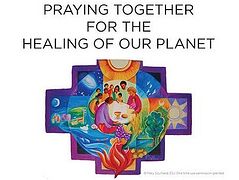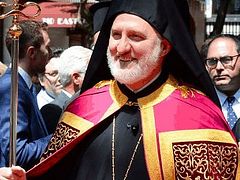New York, October 18, 2019
The Holy Synod of the Greek Orthodox Archdiocese of America met in New York on October 15-16 under the presidency of Archbishop Elpidophoros of America, dealing with a number of issues, including the organization of Synodal Committees, clerical discipline, the possibility of electing a new vicar bishop, the ongoing construction of the St. Nicholas shrine at Ground Zero, and much more.
In particular, according to the official communiqué published by the Greek Orthodox Archdiocese of America, the Synod “Examined the petitions of three clergymen who have requested to enter into holy matrimony in the second instance and decided to formally extend a request to the Ecumenical Patriarchate.”
The Patriarchate of Constantinople, to which the Greek Archdiocese belongs, made serious waves last year when it decided to allow second marriages for priests in the event they are widowed or abandoned by their wives, given that the decision contradicts the long-standing canonical tradition of the Church.
The decision even contradicts the resolution on marriage approved by the Council of Crete in 2016 that was presided over by Patriarch Bartholomew himself.
Each case is to be judged individually by the Holy Synod of the Patriarchate of Constantinople, and the service of the second marriage is to be a low-key event for a close family circle.
There are several ecumenically-received canons of the holy Orthodox Church deal with clerical marriage:
Canon 17 of the Holy Apostles: He who has been twice married after baptism, or who has had a concubine, cannot become a bishop, presbyter, or deacon, or any other of the sacerdotal list.
Canon 26: Of those who have been admitted to the clergy unmarried, we ordain, that the readers and singers only may, if they will, marry.
Canon 3 of the 6th Ecumenical Council: We decree, that those who are involved in a second marriage … and have not resolved to repent of it, be subjected to canonical deposition: but that they who are involved in this disorder of a second marriage, but before our decree have acknowledged what is fitting, and have cut off their sin, and have put far from them this strange and illegitimate connection, or they whose wives by second marriage are already dead, or who have turned to repentance of their own accord, having learnt continence, and having quickly forgotten their former iniquities, whether they be presbyters or deacons, these we have determined should cease from all priestly ministrations or exercise, being under punishment for a certain time, but should retain the honor of their seat and station, being satisfied with their seat before the laity and begging with tears from the Lord that the transgression of their ignorance be pardoned them: for unfitting it were that he should bless another who has to tend his own wounds.
Ancient Epitome of Canon 3: Priests who shall have contracted second marriages and will not give them up are to be deposed. But those who leave off the wickedness, let them cease for a fixed period. For he that is himself wounded does not bless. But who are implicated in nefarious marriage and who after ordination have contracted marriage, after a definite time they shall be restored to their grade, provided they remain without offence, having plainly broken off the marriage. But if after it shall have been prohibited by this decree they attempt to do so they shall remain deposed.
Canon 12 of St. Basil the Great: The Canon has unconditionally excluded from the service all digamists (i.e., men that have married twice).
Canon 1 of the Council of Neocaesarea: If a presbyter marry, let him be removed from his order; but if he commit fornication or adultery, let him be altogether cast out [i.e. of communion] and put to penance.
The above canonical tradition is taken into account in the document, “The Sacrament of Marriage and Its Impediments,” which was promulgated at the Council of Crete in 2016, which Patriarch Bartholomew himself presided over and in which he takes great pride.
In the section, “On Impediments to Marriage and the application of economy,” the document reads: “4. Priesthood in itself does not constitute an impediment to marriage, but in accordance with the prevailing canonical tradition (Canon 3 of the Quinisext Ecumenical Council), after ordination entrance into marriage is forbidden.”
However, Fr. Theodore Zisis, professor emeritus of theology of the University of Thessaloniki, notes that the issue of second marriages actually began with the highly controversial so-called “pan-Orthodox Congress of Constantinople in 1923” (the council that adopted the New Calendar—a decision that continues to cause divisions in the Church to this day), which allowed for second marriages for widowed priests and deacons.
This was followed, he writes, by various other councils, where the views of hierarchs and teachers were expressed on the matter, with the result of this work being the Council of Crete, which, while it does not allow for clerical remarriage, Fr. Theodore notes that that wording of the document was changed at some point, resulting in a softer stance.
At pre-conciliar sessions, the document read: “In accordance with the prevailing canonical tradition (Canon 3 of the Quinisext Ecumenical Council), the priesthood is an impediment to marriage,” whereas in its final form, the document declares that the “Priesthood in itself does not constitute an impediment to marriage…”
“Let us hope that this wording will not be used by anyone to circumvent the clear instructions of the sacred canons,” comments the well-known Greek theologian Archimandrite Sarantis Sarantou.




